How can you dye your eggs with beets for Easter?
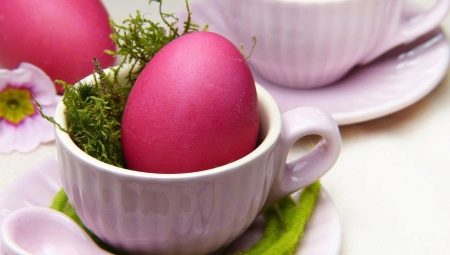
Beetroot is a well-known and popular natural colorant that can produce several shades of the same color. With its help, you can make gradient coloring, create all kinds of effects on various surfaces. For example, on eggs that need to be decorated for Easter.
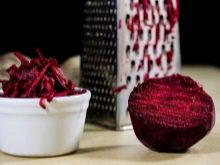
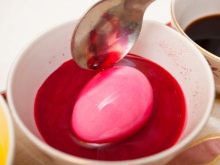

Coloring features
First you need to understand whether this is how they cook and choose eggs before dyeing. Because if there are violations in this moment, then the result will still be imperfect, no matter how good the beets are.
In order for the color after staining to be really beautiful, it is better to use white samples - with brown, the result can be unpredictable.
If the eggs were bought in a store, you need to look at the date and, in principle, inspect them: only fresh and only whole ones are needed.
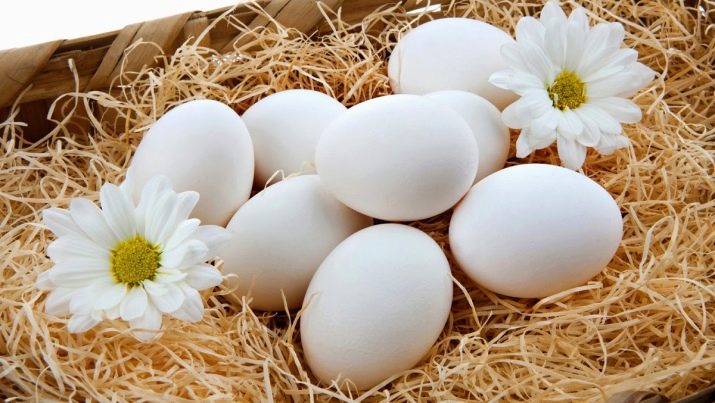
Preparation for painting consists of the following.
- Get eggs out of the refrigerator in advance. They must lie down for a while to become room temperature. Otherwise, they risk cracking during cooking.
- Eggs should be washed thoroughly, for example, with lemon or baking soda - this will cleanse their surface of fat.
- To prevent the eggs from bursting during cooking, add 1-2 tablespoons of salt to the water - the old-fashioned method works.
- Do not cook them for more than 15 minutes - they will turn out to be tasteless.
- After boiling, the water must be drained, the eggs must be poured with cold water (you can put it under the running water), so it will be faster and easier to clean them later.
And these eggs can already be safely and beautifully painted with beets for Easter. The whole process will involve only natural products.

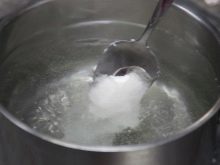
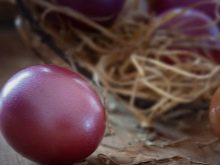
In the composition of beets, by the way, there is a whole class of natural pigments, and the maximum falls on betacyanins, which make beets so rich burgundy. But when the thermal regime changes, with the same cooking, the dye goes into the water, and other coloring components come to the fore: betaxanthin (yellow) and betalain (faded brown). So, in fact, the color of a vegetable changes during cooking: the longer you cook it, the lighter it becomes. This is a feature of beets: it gives off red pigment to the water, and therefore not only eggs, but also water become colored. And the variation in shades is great: from pink to dark wine.
By the way, the extract of beetroot juice is still used in the textile industry: it is used for dyeing fabrics. And in cooking, with its help, they change the color of pastry cream, ice cream and other all kinds of dishes.
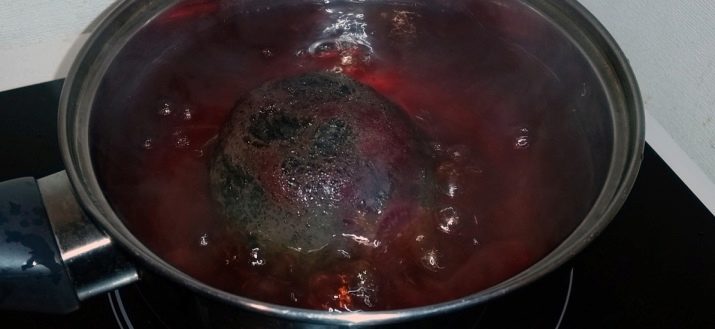
If we return to eggs, we can say the following: the longer you keep them in beet broth or juice, the more saturated and dark they will be. And in order to fix the result, you need to mix the juice of the root vegetable with something like vinegar or citric acid (in fact, it is better for them not to look for an alternative - they do an excellent job with their task).
Many will wonder what to do if the eggs are exactly brown, yellow or beige. No, you shouldn't give up beet coloring. It's just that most likely they will not become pale pink, and they will not become wine, but they may well take on a bright beetroot color or red-violet.
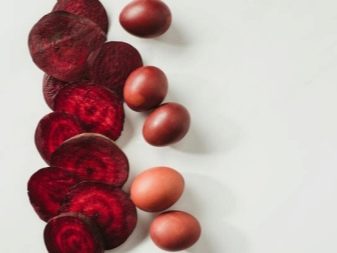

Classic version
The classic is beets plus vinegar. After the future dyes have been boiled, cooled, they need to be wiped with 6% vinegar. Then take beets, somewhere of medium size, also rinse thoroughly, peel and grind on a fine grater. Then it is better to put on gloves, rub each testicle with the resulting beet mass. All that remains is to let them dry.
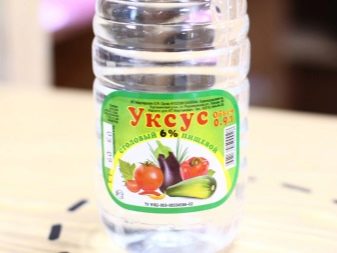
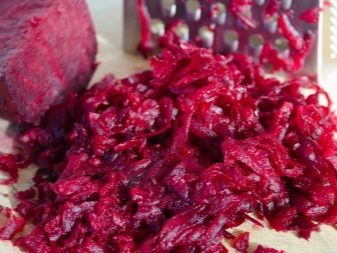
But there is also a second simple option for creating fancy Easter eggs at home. Only the painting will not be a grated fine mass, but beet juice. You need to chop two medium vegetables, squeeze the juice out of them (you can just use cheesecloth). Add 2 tablespoons of vinegar there, dip the eggs in this solution.
The color will depend on the exposure time in it. If the dyes lie there all night, they will become a rich burgundy color. If you get them after 6 minutes, the color will be pinkish, translucent - but this is also very beautiful.
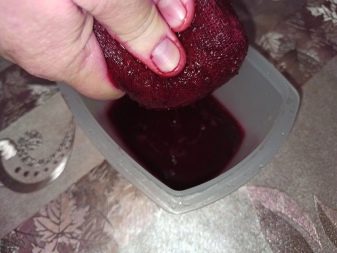
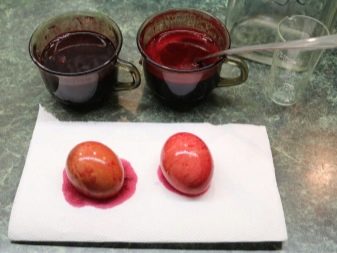
Finally, there is a third way, how to color eggs with beets and vinegar. You need to peel 2 medium vegetables, cut them into cubes (or use a grater) and boil until tender. Then you should strain the broth, pour 3 tablespoons of vinegar into it (you can use 9%). And with this solution, pre-boiled eggs will be poured. Or you can just leave them there all night.
If you do not filter the broth, you can make uneven coloring of the eggs - in fact, many people like it when they get such a natural pattern.
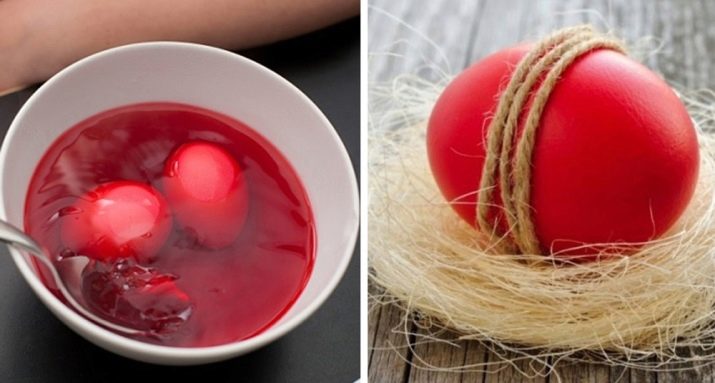
Painting without vinegar
If for some reason someone does not want to use vinegar, you can really do without it. You just need to do this: raw eggs are boiled right along with the beets. Only first, they need to be thoroughly washed (with soap), degreasing their shell. Although, to tell the truth, it is vinegar that does better with degreasing. Krashenki should not be cooked for more than 11 minutes, and then they must be removed from the saucepan with a slotted spoon. They will cool in cold water. And beets, by the way, can be cooked until cooked: there will be a good ingredient for festive salads.
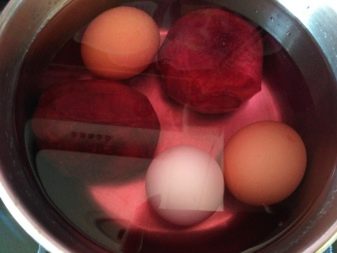
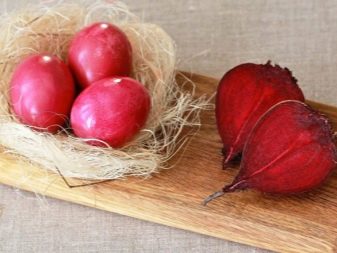
You can also combine two popular ingredients for natural coloring: beets and onion peels.
The recipe is as follows:
- for about an hour, the eggs should lie at room temperature, then gently rinse the shell with soda;
- pour onion skins with water, bring it to a boil, cover and cook over low heat for an hour;
- cool the resulting husk broth to room temperature;
- send eggs into it, boil in it for 15 minutes and let it cool;
- but after that - on top of the onion shade - you can use beets and apply as indicated in the methods above: rub with pulp, dip in juice and keep in it, etc.
What these ingredients are combined for is for color saturation. The eggs will be very bright, and the dried dyes can still be rubbed with vegetable oil - even for the exhibition.
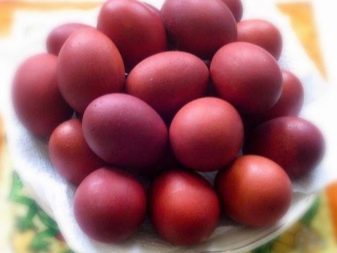
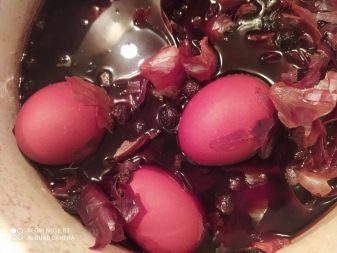
Using beet juice
You can simply grate the root vegetable to get juice, or you can use a juicer. The second option will be simpler and faster. The drained vegetable liquid should be in a separate container as a result, there you can squeeze out the remnants of beet juice from the pulp wrapped in gauze. Immediately add a couple of tablespoons of vinegar to the resulting composition. You need so much juice that it completely covers all the dyes.
It will not work to color each testicle separately: the beet juice should act on the surface for a long time, and therefore all samples will have to be placed in a container so that they are “headlong” covered with juice.
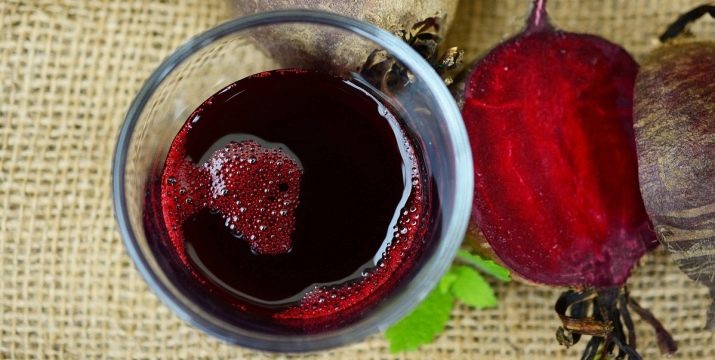
The 3 dyes that have lain there for an hour will acquire a pale pink hue. If you send a container with juice and eggs to the refrigerator, but at night, the next morning you can get beautiful burgundy dyes from there. With the time of staining, you can experiment as much as you like.
How to paint correctly – juice or boiled beets – the question is not the most correct one. Anything, as long as the resulting shade is fully consistent with the request.
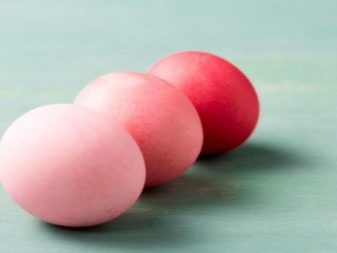

other methods
It's not uncommon to see a recipe that combines beet juice and turmeric. If you decide to do this, you need to remember that always at first the staining will be in a lighter shade.
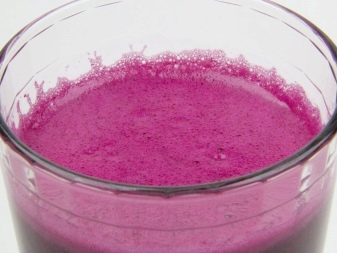
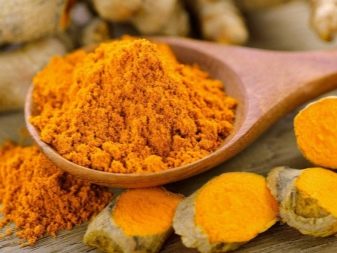
Step by step it looks like this.
- Boil eggs in salted water, cool them.
- Dissolve a couple of tablespoons of turmeric (powder) in 0.5 l of water, boil for 15 minutes.
- Then add a couple of tablespoons of vinegar to the broth.
- In this solution, which has just cooled down, lower the boiled eggs, keep them in it for a couple of hours.
- And now eggs painted in a solution of turmeric can be painted over with beets. In any way: from using the juice of a root vegetable to rubbing them with the pulp of a vegetable.
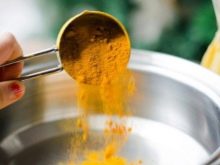

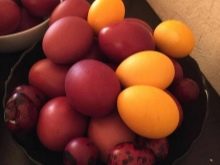
It turns out that the two coloring effects are added together. All that remains is to rub them with sunflower oil for shine, then dried.
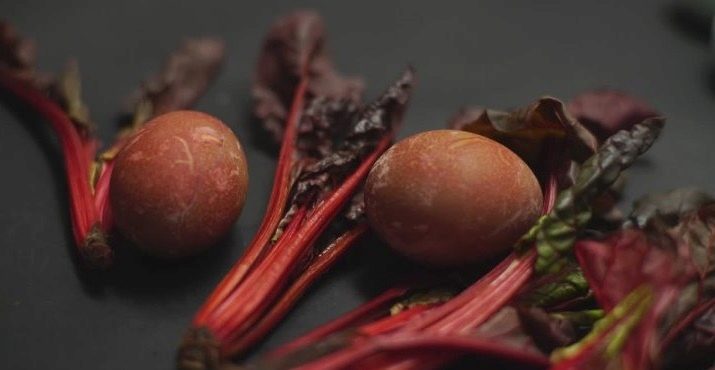
But that's not all: to make the decorativeness of the dyes higher, you can make beautiful patterns on them. And the techniques for applying them are very different. You can use rice or any other cereal. For example, roll a boiled egg in rice so that it sticks to it, wrap it with a thin napkin so that nothing falls off, and in this form send it to a container with beet juice. At the exit, chaotic specks will appear on the surface of the paint.
The same can be done using sprigs of parsley, cilantro, or dill. They are applied to one side of the egg, pressed with the same napkin or light cloth, and then dipped into the dye composition. The place where the twig adjoins the shell will remain unpainted - it will turn out beautifully. By the same principle, various blades of grass and flowers are used. But you can still use all kinds of stencils and stickers, although this is no longer so authentic, of course.
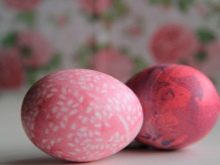
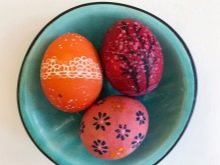
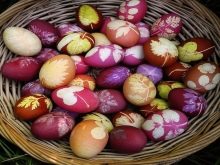
Also, an interesting way of coloring will be the joint use of beets and carrots.
- You need to take, say, 9-10 eggs.
- Carrots will need 450 g and the same amount of beets. These are indicative values, water is 0.5 liters.
- Take vinegar (table) for this mass 3 tbsp. l.
- A teaspoon of salt will need to be added to the water during cooking so that the shell does not crack.
- Root vegetables need to be thoroughly rinsed, peeled and minced.
- The resulting gruel must be folded into a saucepan and poured over with cold water. Send vinegar and salt there, mix everything well.
- The eggs are immersed in the resulting mass. It is necessary that they completely "drown" in this liquid.If not, add more water.
- The dishes are put on fire, after boiling it must be reduced, the product must be cooked for 10 minutes.
- Ready eggs should be infused for 2 or even 3 hours in this composition. During this time, the shell will absorb the natural pigment from the two vegetables. If you want to paint less intensely, an hour of exposure will be enough.
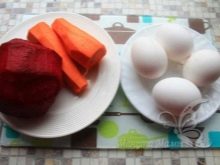
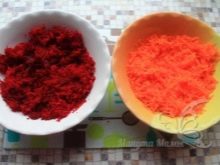
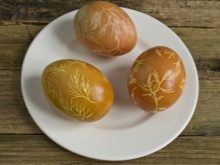
If you want to add decorativeness to this method, you can wrap the eggs with threads before immersion in the coloring composition: either randomly, or according to some scheme. And then the threads are removed, and a pretty pattern is formed on the shell. You can also paint the eggs in halves: put the dye in the composition so that only one part of it is under the liquid. And keep in solution, for example, 3 hours. And then send a soul mate there and hold it for 1 hour. Uneven coloring will be a highlight, and the dividing line of the two shades will be even.
Or maybe in the process of coloring some author's method will appear, unexpected, but quite working. This is creativity, a kind of even art.

The process of dyeing with beets is clearly presented in the following video.








